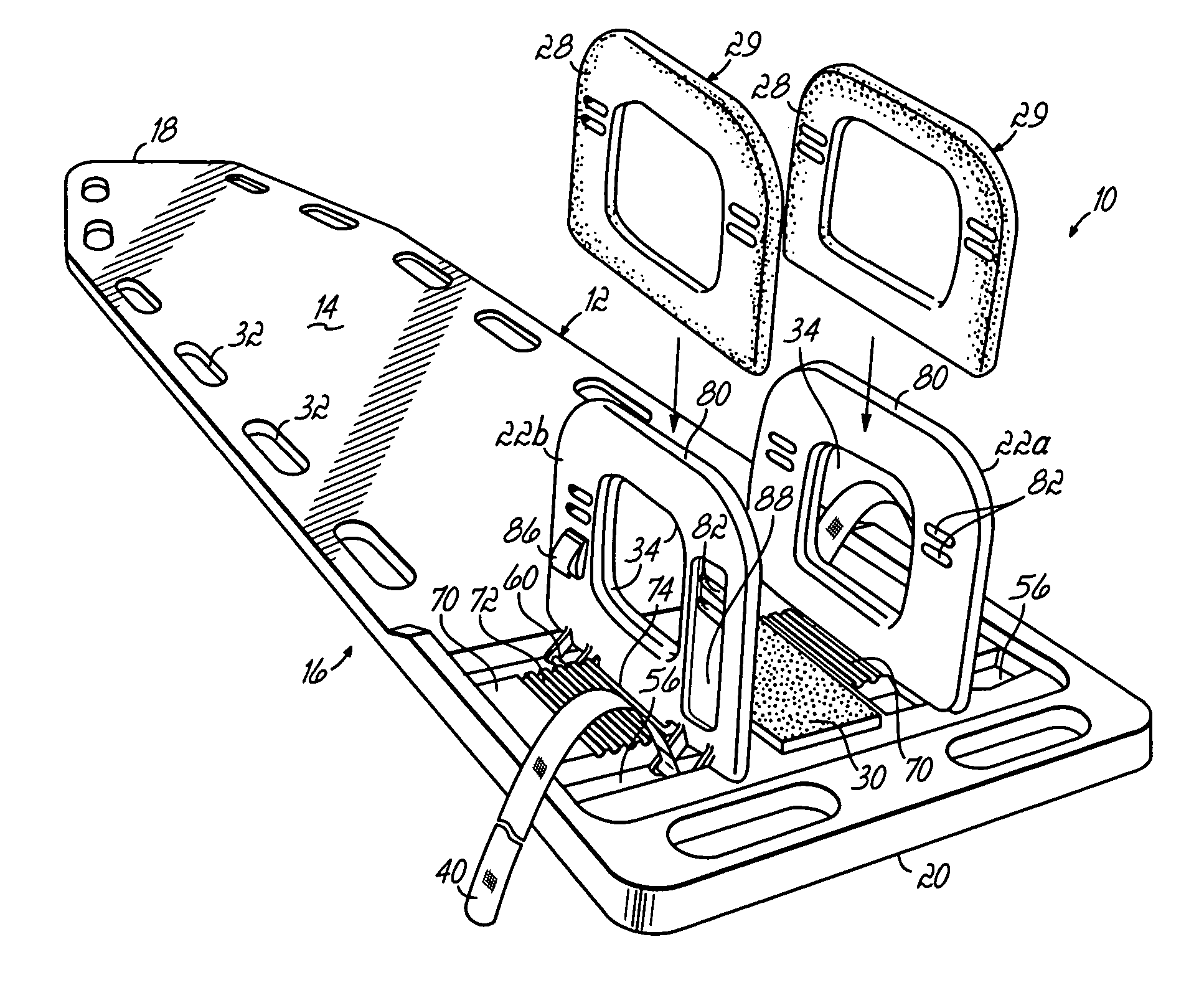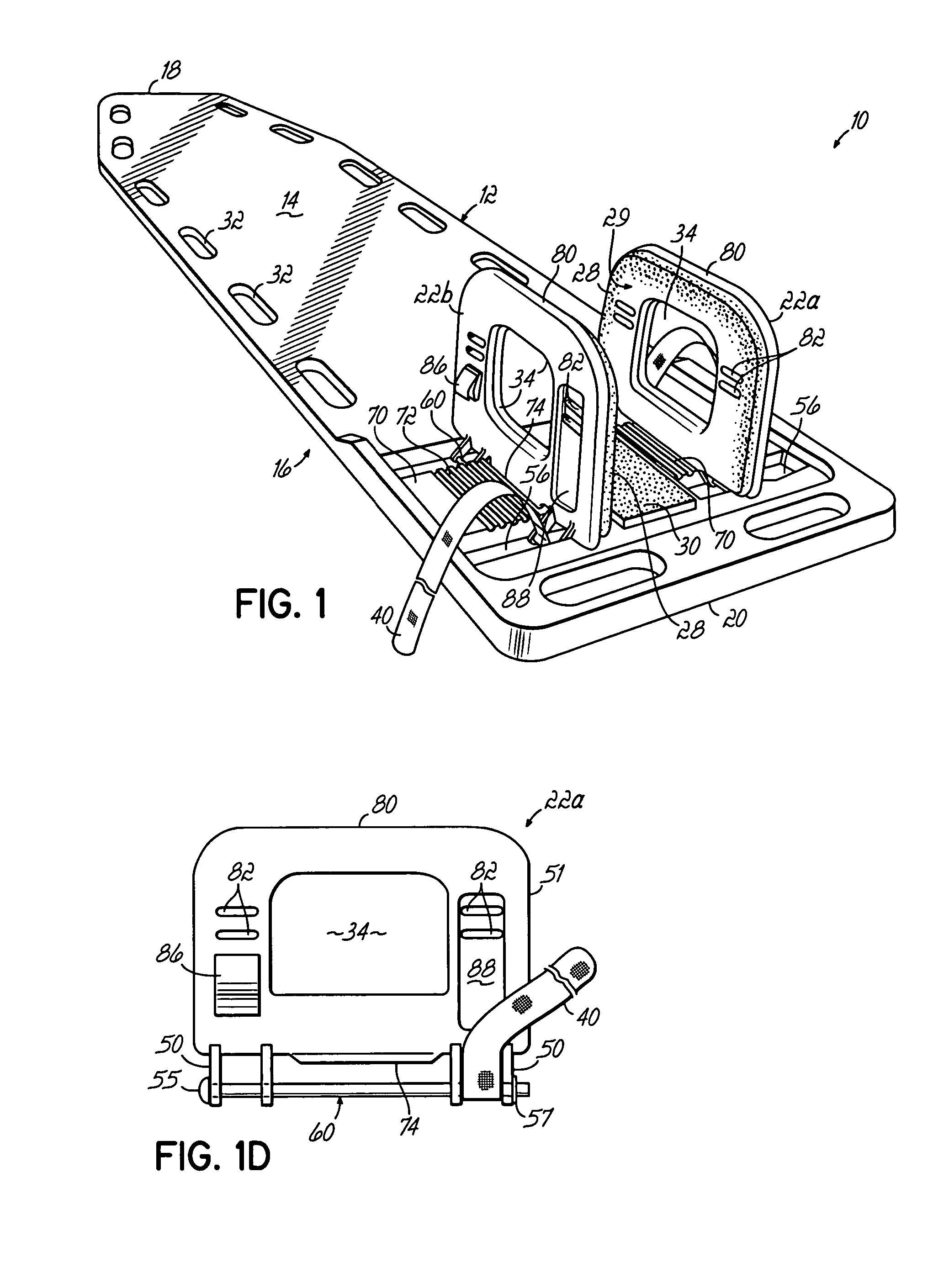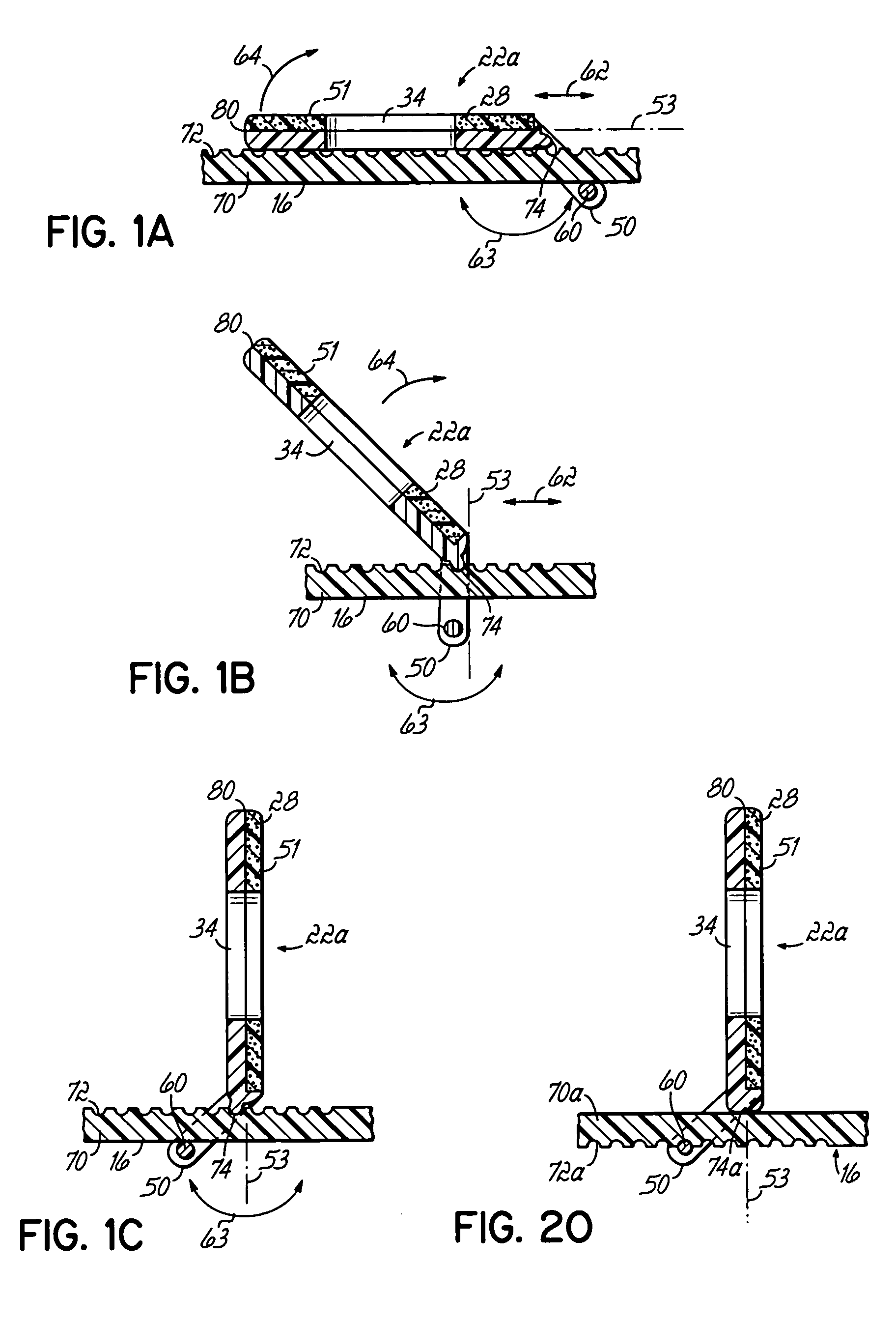Patient immobilization device
a technology for immobilizing devices and patients, applied in the field of patient immobilization devices, can solve the problems of affecting the comfort of patients, and affecting the comfort of patients, and achieve the effect of preventing the block from falling over
- Summary
- Abstract
- Description
- Claims
- Application Information
AI Technical Summary
Benefits of technology
Problems solved by technology
Method used
Image
Examples
Embodiment Construction
[0065] Referring to FIG. 1, a perspective view of a patient immobilization device 10 of the invention is illustrated. Generally, such a device comprises a backboard or backboard portion 12, having a top side or front side 14, and a bottom side or back side 16. In use, a patient would generally be placed on the front side 14, with their feet at the foot end 18 of the backboard and their head at the head end 20 of the backboard. For securing the head and neck of a patient, the invention utilizes a pair of opposing paddles 22a and 22b, which are slidably mounted on the backboard 12, and are configured, in a support position, to support the head and neck of a patient. Embodiments of the paddles 22a, 22b are illustrated in the support position in FIG. 1.
[0066] Referring to FIG. 2, the head 23 and neck 25 of the patient 26 are secured and immobilized between the paddles during use. The body of the patient 26 lies along the length of the backboard 12, and often is secured to the backboard...
PUM
 Login to View More
Login to View More Abstract
Description
Claims
Application Information
 Login to View More
Login to View More - R&D
- Intellectual Property
- Life Sciences
- Materials
- Tech Scout
- Unparalleled Data Quality
- Higher Quality Content
- 60% Fewer Hallucinations
Browse by: Latest US Patents, China's latest patents, Technical Efficacy Thesaurus, Application Domain, Technology Topic, Popular Technical Reports.
© 2025 PatSnap. All rights reserved.Legal|Privacy policy|Modern Slavery Act Transparency Statement|Sitemap|About US| Contact US: help@patsnap.com



